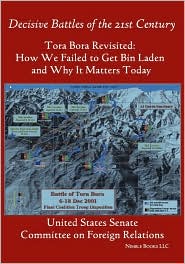
First volume in Decisive Battles of the 21st Century. From the Executive Summary: On October 7, 2001, U.S. aircraft began bombing the trainingbases and strongholds of Al Qaeda and the ruling Taliban acrossAfghanistan. The leaders who sent murderers to attack the WorldTrade Center and the Pentagon less than a month earlier and therogue government that provided them sanctuary were running fortheir lives. President George W. Bush's expression of America's desireto get Osama bin Laden "dead or alive" seemed about to cometrue. Two months later, American civilian and military leaders celebratedwhat they viewed as a lasting victory with the selection ofHamid Karzai as the country's new hand-picked leader. The warhad been conceived as a swift campaign with a single objective: defeatthe Taliban and destroy Al Qaeda by capturing or killing binLaden and other key leaders. A unique combination of airpower, Central Intelligence Agency and special operations forces teamsand indigenous allies had swept the Taliban from power and oustedAl Qaeda from its safe haven while keeping American deaths to aminimum. But even in the initial glow, there were concerns: Themission had failed to capture or kill bin Laden. This failure and its enormous consequences were not inevitable.
|